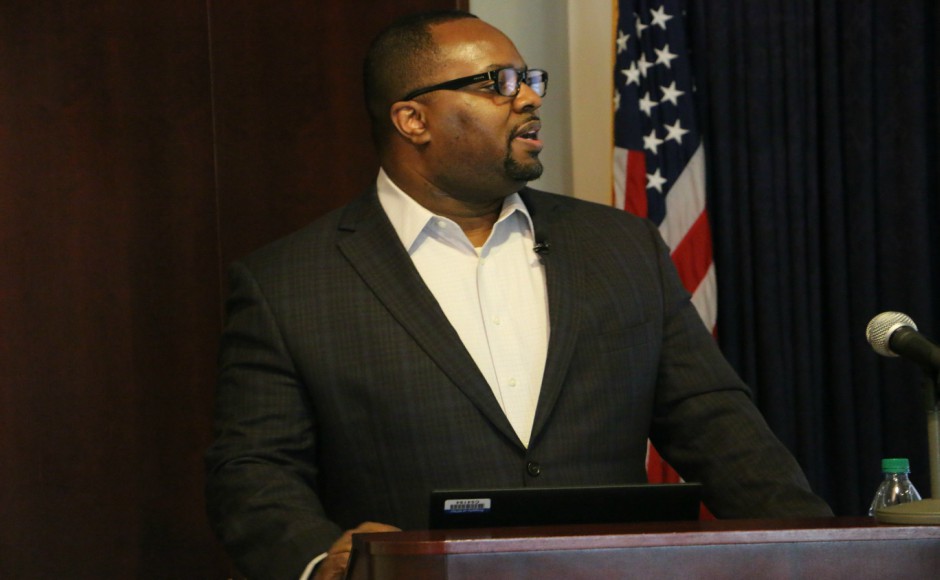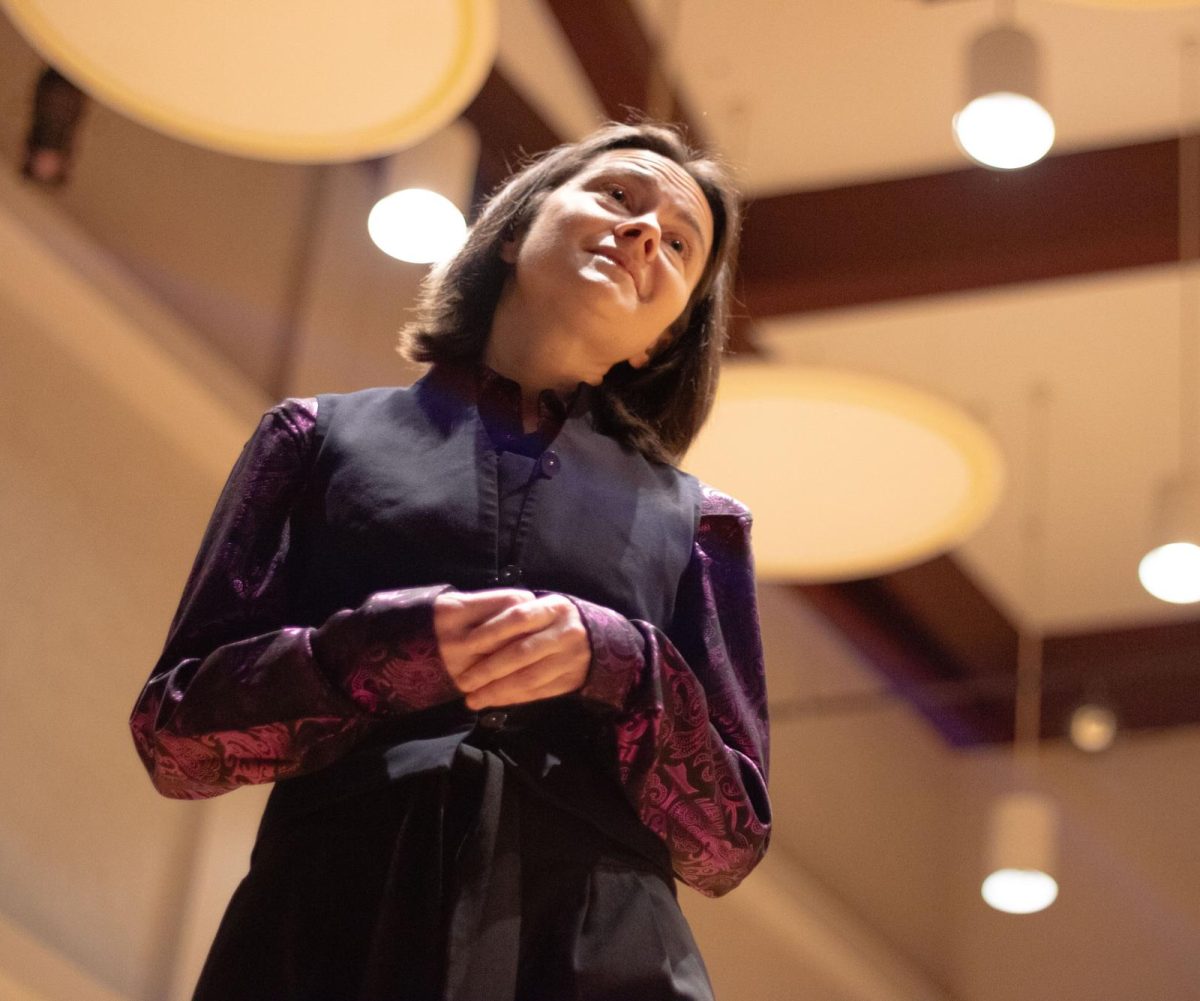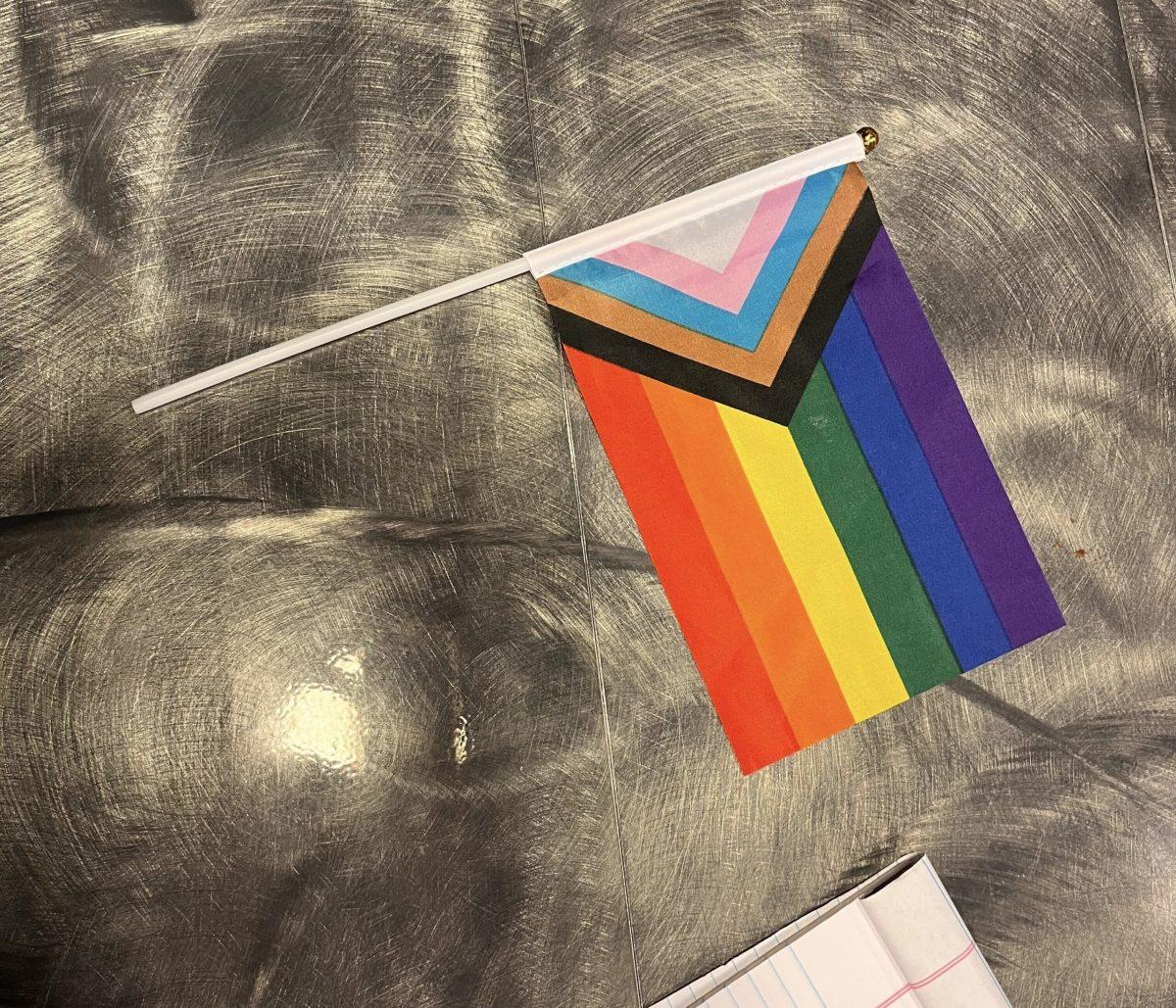Photo and story by William Green / Contributing Writer
A Vanderbilt University professor and his Middle Tennessee State University counterpart educated an audience of honors students Monday in the Paul W. Martin Sr. Honors Building on the relationship between racial inequalities in American health and the presentation of race and racial empowerment in American culture as part of the spring 2018 weekly Honors Lecture Series.
The lecture, titled “‘Lest We Forget’ the Heterogeneity of Blackness: The Art of Pursing Health Equity in Post-Black America,” was presented by Derek Griffith, a Vanderbilt associate professor and the director of the university’s Center for Research on Men’s Health, and Gloria Wilson, an MTSU associate professor who teaches in the university’s Africana Studies, Art and Design and Art Education departments.
Each semester, MTSU’s University Honors College organizes a weekly series under a different theme. This semester’s theme is “American Values,” and the perceived value of being black in America was at the heart of Griffith and Wilson’s lecture.
Wilson began her presentation with a quote from the director of the National Portrait Gallery, Kim Sajet, who said, “Through the visual, people learn history and their place in it and set the course of events.”
That thought proved instructive as Wilson walked the audience through the history of black representation in American visual art. Wilson described art from 19th century paintings by Winslow Homer and William Sidney Mount to the recently released film “Black Panther” and the recently debuted portraits of former President Barack Obama and his wife Michelle in the National Portrait Gallery.
Wilson stressed that the way in which people see themselves represented in culture and what control they have over that representation affects their self-worth and perceived status in society.
“Who is telling a story?” Wilson encouraged the audience to ask of the culture they see. “What part of the story has been clipped? What does that mean for people watching?”
When considering whole populations, Wilson said that the way people see themselves represented in culture can subtly influence whether they’re wealthy, civically engaged or even physically or psychologically healthy.
With the broader context established by Wilson, Griffith presented the audience with a host of statistics that displayed the gaps between white and black health, including differences in white and black life expectancy.
“We have to both reckon with the effects of the past and think about how to rectify them going forward in the future,” Wilson said.
While the racial gap in life expectancy had narrowed since the beginning of the 20th century, especially for black women, the gap between white and black men remained significant. The trend of a longer life for both races was not purely and consistently upward, however, Griffith noted. As education has become more important in the job market, economic fortunes for those without college degrees have declined in recent years, especially since the financial crisis in 2008. In the last 10 years, life expectancy for white Americans without college degrees has actually fallen among demographic groups in America.
One of Griffith’s key points was the difference between equality, or “everybody getting the same thing,” as he put it, and equity, which is everybody getting what they need to succeed. Griffith made this distinction especially clear with a chart that displayed differences in mental health issues white and black Americans have reported suffering from. According to Wilson’s presentation, white Americans in recent years have reported suffering more from depression and anxiety than black Americans. But, black Americans have reported suffering from high blood pressure, often caused by stress, far more often than white Americans.
To contact News Editor Andrew Wigdor, email newseditor@mtsusidelines.com.
For more news, follow us at www.mtsusidelines.com, on Facebook at MTSU Sidelines and on Twitter at @Sidelines_News.














